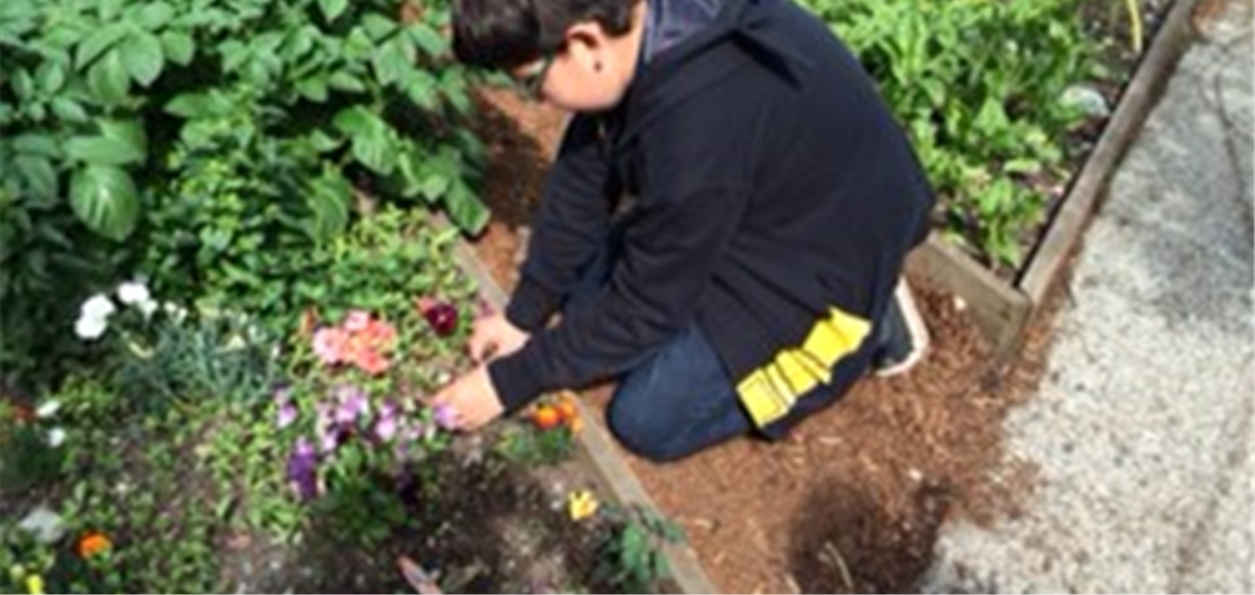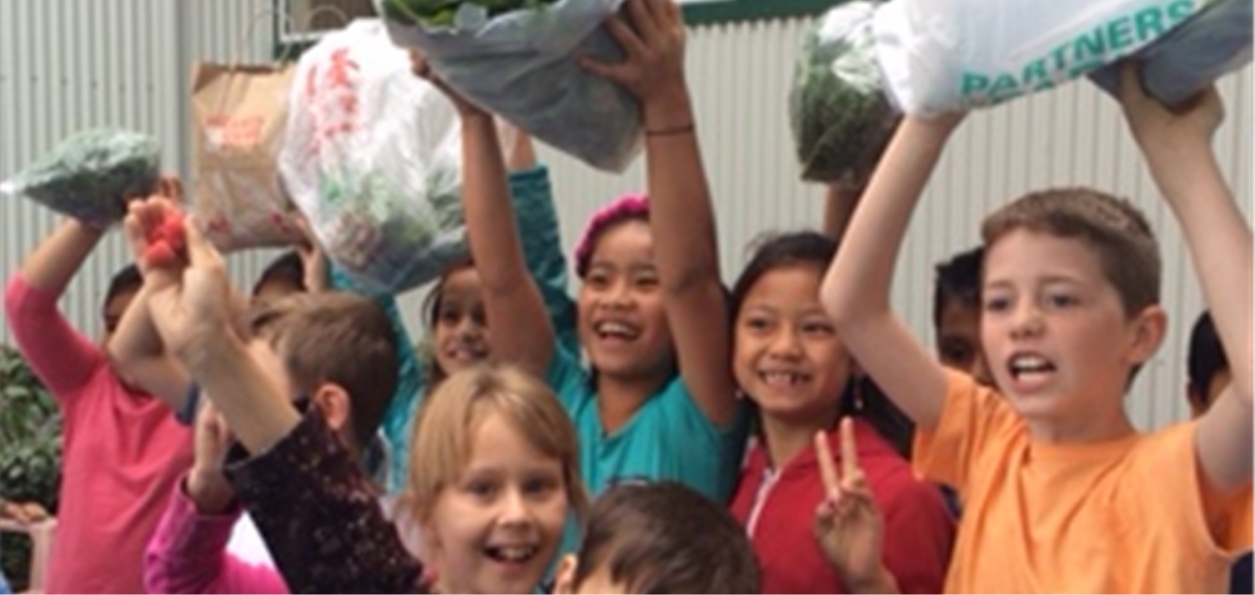We are K.B. Woodward, an inner city school whose students are often unaware/uneducated about healthy eating and unable to access their own gardens because of the limitations of apartment/basement suite living. We were lucky enough to have the beginnings of a school garden, but the garden had fallen into disarray and needed work. With the help of a wonderful group of staff and students, lots of energetic work and the HSN funding, we were able to turn our garden into a “little bit of heaven” for all involved.
Our school garden activities were focused in several areas: education regarding growing and eating healthy food (organic vegetables), exposure to the natural environment (various plant and insect interactions), increasing connectedness to our school by increasing pride in our garden, and maintaining a place where students with challenges could find a haven. These activities included:
– growing carrots, potatoes, salad gardens, peas, kale, edible flowers, herbs, strawberries, raspberries; harvesting them and learning how to use them in meals
-growing foods for our school pets: a collared lizard and guinea pigs
-learning about composting and growing food organically
-learning about the parts of a plant, the plant cycle and what plants needs to grow (science learning outcome)
-measuring and charting plant growth (math learning outcome)
-learning about what part vegetables serve as part of a healthy diet
The school garden was opened during many recess and lunch breaks so that students could help with maintaining gardens (mainly weeding and watering), and teachers could access the garden during class time for educational purposes. Out of 23 classes, only 3 did not use the garden (we will get them next year!) As well as teachers and students, other staff members (CCWs, EAs) were actively involved in maintenance and planning, and the garden was used by several afterschool clubs and agencies.
Our students and staff alike love the garden and this increases our sense of community. We often have to limit the number of students coming in during recess and lunch because so many want to be there. Many of the staff eat lunches outside in the garden area now. The garden is a peaceful place where EAs and CCWs can bring children who are having a challenging time – sometimes something as small as letting them water plants helps them relax and initiate a conversation. Children are excited – about growing plants, about eating something they have grown, about learning. Teachers report that their students talk more about eating healthier and learning about our natural environment and as an aside; teachers are learning more about them too. Although no formal evaluation was done, there is no question, after discussion with educators and administration, that the garden plays an increasing part in our school pride and education.
The growth of our school garden definitely increased school connectedness. As mentioned before, troubled students were often brought to the garden to calm down and enable conversations with adults who care about them (EAs, CCWs). Other students who had difficulty socially found kinship with fellow gardeners (both young and old, staff and student), bonding over finding worms or picking lettuce. Finally, students found a place where they became helpful to the school, increasing both pride in self and the school.
Several teachers have shared ideas for increasing garden use and investigating related topics – worm composting, seed sprouting in the classroom, learning more about beneficial insects – and we hope to try some of these next year. Some of the crops did not grow well (e.g. Swiss chard, cucumbers), so we will have to take a better look at timing of crops, alternate organic pest management and types of crops grown. We will use our greenhouse more to grow transplants and early crops. We will also start planning directly with teachers earlier in the school year and try to tie a higher number of learning outcomes to activities in the garden. Lastly, we want to increase the garden as an outdoor classroom by having a covered instructional area outside; some of the purchases this year will help us with this goal.


